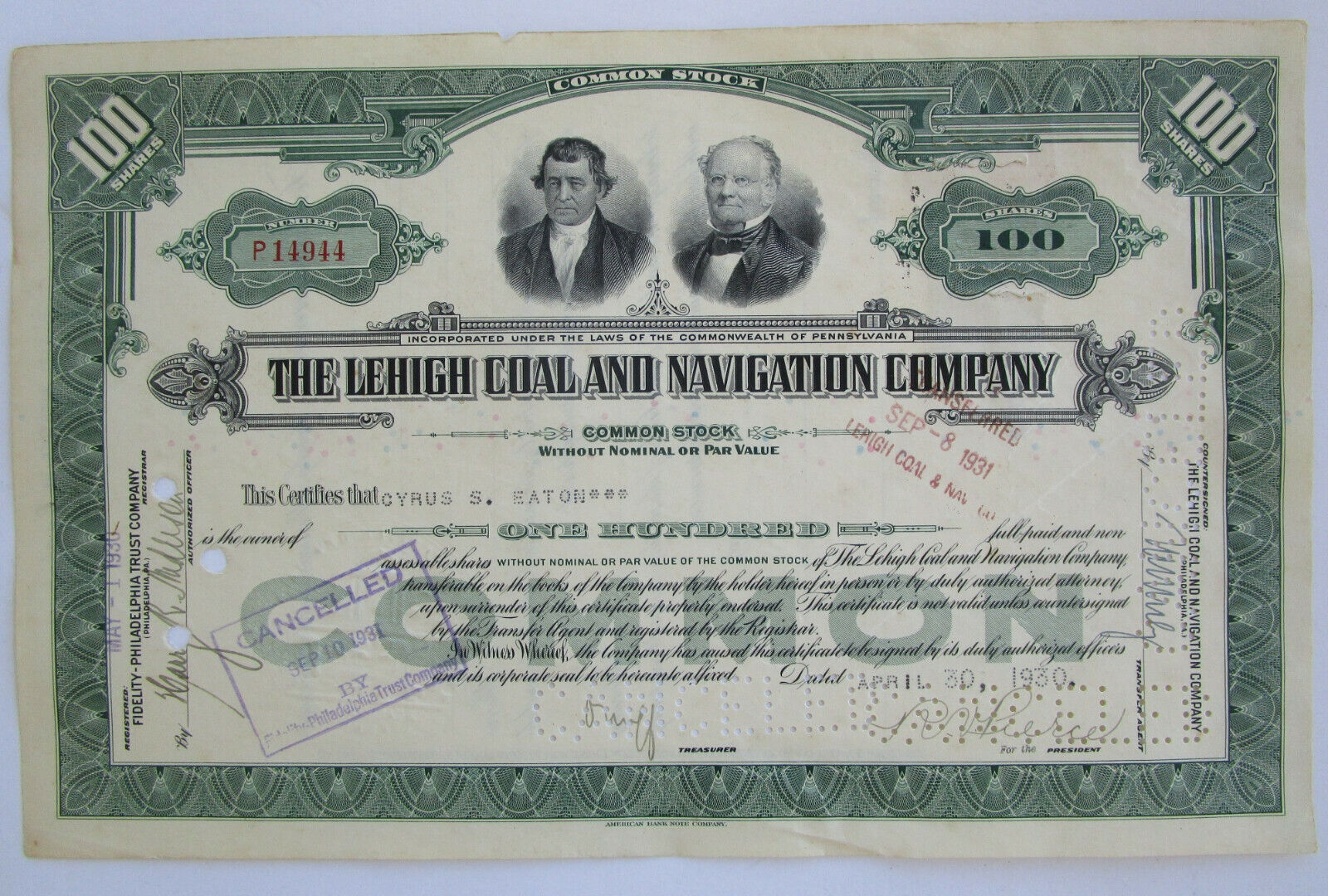-40%
Watervliet Turnpike Company early 1800s New York stock certificate
$ 26.4
- Description
- Size Guide
Description
Old Stock Yard Collectible Stock and Bond CertificatesWatervliet Turnpike Company
Original stock certificate
Early 1800s New York
Attractive certificate with nice vignette
More information from the Albany County Historical Association (quoted from albanycountyhistory.org):
During, and immediately after America’s War of Independence from Great Britain, it had become apparent that the country lacked adequate roads to meet the demands of commerce and a growing nation. By the 1790’s corporations were formed by acts of the New York State Legislature to build improved turnpike roads in the Albany area.
In December, 1801 a bill was introduced to the Legislature to build a turnpike road, sixteen miles long, between Albany and Schenectady to replace the deplorable old “Kings Highway” through the Pine Bush and in use since the 1600’s. This new turnpike consisted of round stone cobbles with carved stone channels spaced at the width of a common wagon axle. Today, this turnpike is called Central Avenue. By 1802, the City of Troy, N.Y. began construction of yet another turnpike to connect their city with Schenectady. Several early photographs of this road show it to be a dirt road. It is known today as the Troy-Schenectady Road.
The earliest road northward out of Albany ran very close to the west bank of the Hudson River and was prone to flooding during spring freshets. Commerce between Albany and West Troy and Troy was ever increasing and a need for an improved road, not subject to flooding was needed between Albany and West Troy (Watervliet). The Erie Canal was already in operation for a few years, running northward out of Albany and through West Troy and points beyond.
Several noted residents of the area between Albany and West Troy including Jeremiah Schuyler, Thomas Hillhouse and Robert Dunlap, and others, incorporated the Watervliet Turnpike Company on March 31, 1828 “to make a good and permanent road from the north boundary of the City of Albany (about where the VanRensselaer Manor house stood) to the upper ferry outside the city of Troy……the stock of said company shall consist of nine hundred shares of one hundred dollars per share.” Certificates of stock were printed and issued.
The major difference between the Albany and Schenectady and the Troy and Schenectady Turnpike and the Watervliet Turnpike was its advanced method of construction called a “McAdam Road” or a “McAdamized Road”, a process invented by Scotsman John Loudon McAdam (1756-1836) which used several layers of crushed stone of different sizes rolled and compacted into a hard smooth convex surface raised above the level of adjoining ground and equipped with ditches on each side to collect water. In a book called: “Letters about the Hudson River and its Vicinity” a paragraph describes this road: “There is a fine smooth Macadamized turnpike on the west side of the river, from West Troy to Albany. This road was completed in 1831 and cost about 0,000. An excellent line of accommodation stages leave Troy and Albany every half hour during the day. Passengers with their baggage are taken up and put down in any part of either city for the trifling sum of twenty-five cents. The distance over the turnpike is six miles and it runs parallel and in sight of the river (Hudson) and canal all the way.” The road was still called the Macadam Road in the early Colonie Assessors records and today is known as Rt. 32 Broadway.
Old Stock Yard Policies and FAQs
Please visit my eBay store
– any combined certificate purchased
ship free
with auction items!
Shipping and Handling Charges:
.99 for one certificate to the U.S.
.99 for one certificate to the rest of the world
Additional, combined certificate purchases
ship for free
!
Shipping Method and Timing:
Certificates are carefully packaged in poly bags and rigid envelopes to protect them during shipment. Items are sent via U.S.P.S. – usually first class, but occasionally priority or parcel post. Most items will be mailed within 48 hours of payment.
Payment Method:
In accordance with
eBay
policy, my listings are setup to accept
Paypal
payments. Sellers are allowed to accept other forms of payment only if the buyer requests another payment method – so if you prefer to pay using a method other than Paypal, please let me know.
Return Policy:
Items can be returned for any reason within 15 days of purchase. A full refund will be issued upon receipt of the return if the item is the same condition it was in upon delivery.
FAQs:
Are you your certificates authentic or copies?
Everything
I sell is original and authentic. I do not sell copies or reproductions.
Is the certificate pictured the exact one I will receive?
Usually, yes. Occasionally, I do list certificates of the same type without rescanning. In this case, the certificate you receive will be virtually identical (same color, size, vignette, etc.) to the one pictured. Again, if you ever receive anything from me you are not 100% pleased with, you can return it for a full refund.
What is the best way to store, protect, and display my certificate collection?
The best thing, by far, that I have come across for storing certificates are
profolios and sleeves made by Itoya
. You can purchase them in my eBay store. I have several sizes available.
Do the certificates you sell have financial value?
No, these certificates are sold as collectibles only; although they are authentic, they no longer hold financial value.









